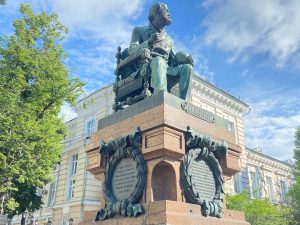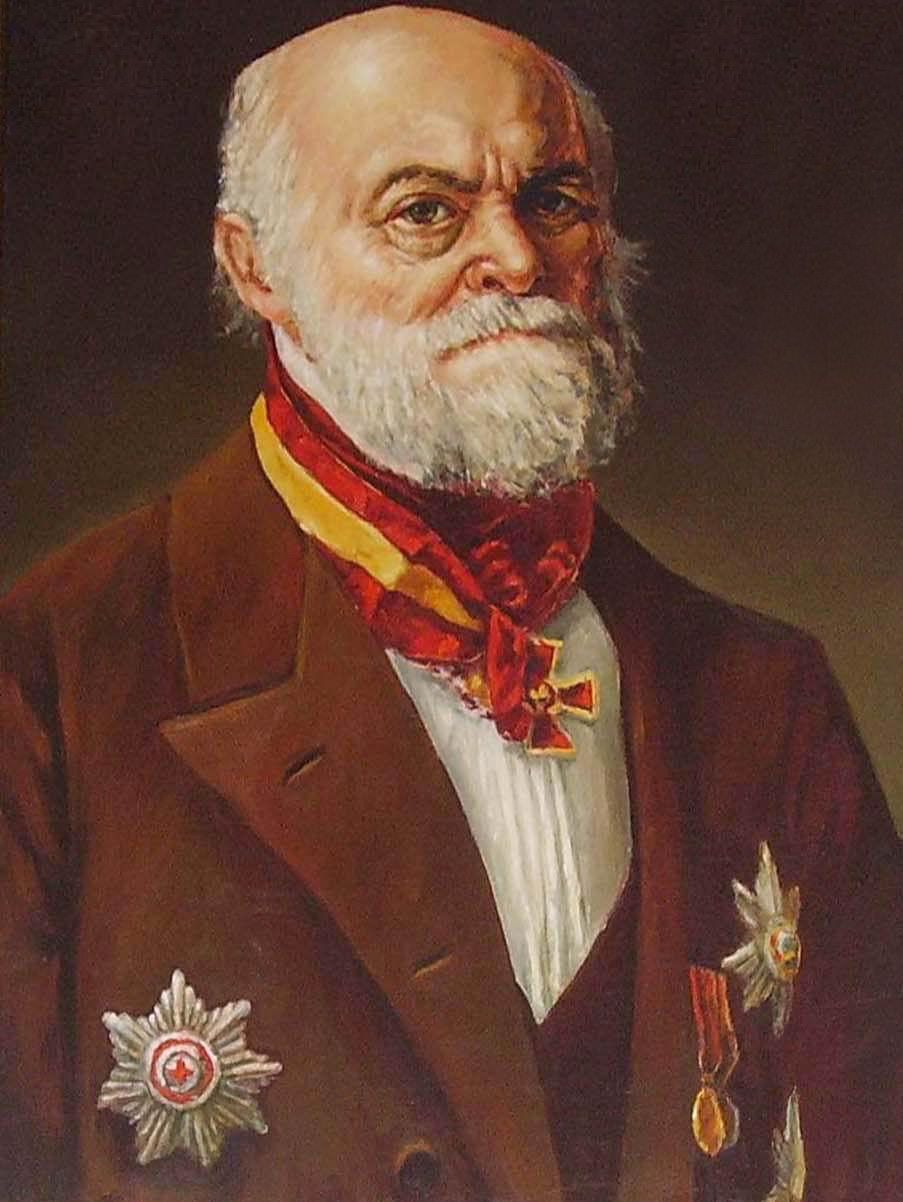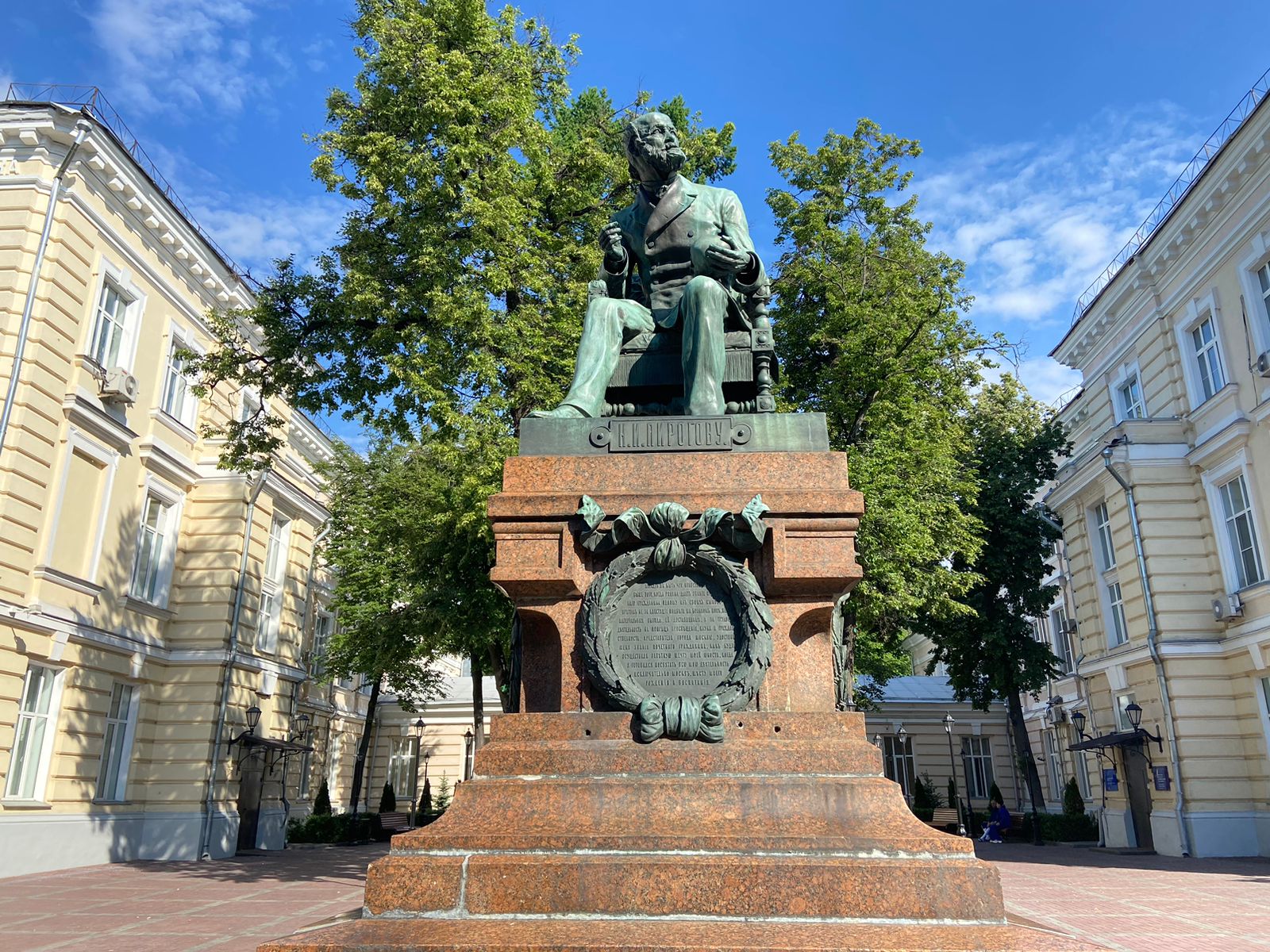Nikolai Ivanovich
Pirogov
1810-1881

Nikolai Pirogov was born in Moscow on November 25, 1810, in a family of military treasurers. He was the 13th child in his family, and his father, Major Ivan Pirogov, was a military officer. His mother, Elizabeth Novikova, came from an ancient merchant family in Moscow. Pirogov received his early education at home, but later attended a private boarding school run by V.S. Kryazhev. Unfortunately, due to financial difficulties, he had to leave the school after two years. It was Professor Efrem Mukhin who inspired Pirogov to pursue a career in medicine. Mukhin was a frequent visitor to their home and became a mentor to Pirogov. He even offered to support Pirogov financially to study at state expense. However, despite the need, the mother refused, considering it humiliating. In 1823, at the age of 14, Pirogov entered the Medical Faculty of Imperial Moscow University as a student, indicating in his application that he was 16 years old, adding two years to his age. During this time, the family was experiencing extreme financial hardship, and Nikolai did not have the funds to purchase a student uniform. Therefore, he attended classes in an overcoat, suffering from the heat. At the university, Pirogov attended lectures given by prominent professors such as H.I. Loder, M.Ya. Mudrov, and E.O. Mukhin. Their influence on his academic development was significant. In 1828, after completing his studies, Pirogov received a degree in medicine and was admitted to the Professorial Institute of the Imperial University of Dorpat, where he trained future professors for Russian universities. There, he worked under the supervision of I.F. Moyer and encountered V.A. Zhukovsky. Additionally, while at the university, he formed friendships with V.I. Dahl. In 1833, Nikolai Ivanovich Pirogov defended his doctoral dissertation on “The feasibility and safety of abdominal aortic ligation in the treatment of inguinal aneurysms” and received his medical degree. After that, he went to study at the University of Berlin, where he worked with a group of fellow Russian students, including F.I. Inozemtsev and A.M. Filomafitsky. In 1836, Pirogov returned to Russia and was offered the choice of a university to work at as a professor. He chose Moscow, but had to stay in Riga because of illness. By the time he recovered, the position at Moscow University had already been filled. As a result, he became the professor of theoretical and practical surgery at Dorpat University. In 1841, he moved to St. Petersburg to head the Department of Surgery at Imperial Medical and Surgical Academy while also running the hospital surgical clinic he founded. Pirogov studied and processed existing surgical methods, and developed his own techniques, which allowed him to significantly reduce the number of amputations. One of these techniques is known as the “Pirogov operation”. During his work, he began using anatomical studies on frozen corpses, which led to the development of a new field of study – topographic anatomy. In 1859, he published an anatomical atlas called “Anatome topographica” in St. Petersburg. This atlas became an important reference for surgeons worldwide. In 1846, Pirogov became a corresponding member of the Imperial St. Petersburg Academy of Sciences. The same year, he travelled to the Caucasus and introduced the use of starch bandages for dressings, which proved to be more convenient and durable. In 1847, Pirogov performed the first surgery using ether anesthesia in a field setting, significantly changing medical practice.
Address: Moscow, Bolshaya Pirogovskaya str., 2, building 1

